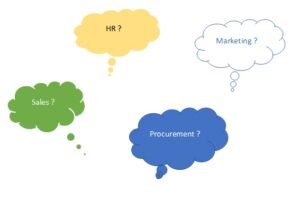I can bet everyone was in this situation: a stakeholder comes with a photo of something he found on the internet and asks you to procure it for him. This is the thing that will increase his productivity by 50%. But he has no idea how is “this” called, who produces or supplies it.
They have been to an exhibition and saw it. Or found it on YouTube. Or a friend told them about this new hot piece of equipment everyone is using. And your job is to find it. No description. No brand. No producer. Where to start?
Yes, it happens. And it makes our job both challenging and interesting. Kind of like treasure hunting. I will tell you about my experience. Usually, it ended in finding the item they were looking for and providing all the needed information. Sometimes we bought it, sometimes it was too expensive.
Our first goal is to find out the technical name of the product. Then the producer of the one presented to you.
I start with a close examination of the information I have on hand. If it’s a photo, look into every detail. A part of the model number can lead to the producer and specification. Also, use the Google image search at images.google.com. If the photo is from a presentation or web page, the producer’s web page will likely pop up.
If this does not work, or you do not have a photo, google is your next best friend. Here our goal is to find out the technical name of the product. You would be surprised how simple machines have complicated names you would never guess. How does the producer call a machine that cuts chicken meat into cubes? Dicer. And if it cuts chicken into strips? Slicer.
Still no luck? Time to call your network. We think that our main contact must be with the sales team of our suppliers. But we need to have good and wide contacts with fellow purchasing professionals as well. These are the moments where you will be happy about having them.
And so, you have finally found the product name and one supplier.
Time for stage two. Getting the famous three quotes. If you have suppliers web pages, look for their local contacts. They either have sales offices around the world or will provide a link to the local distributor/seller. I recommend this approach. It assures that in the case that anything goes wrong you are communicating with the direct provider. Traders can put you in trouble with warranty claims.
Once you have local suppliers, bring them in. Nothing can be worse than getting an item only to figure out that it does not solve our problem. Bring the end-user to the meeting and let him explain his need. Make sure everyone understands the problem and the potential solution. Don’t take this lightly. I saw in my career many brand new pieces of equipment that are not in use because of a misunderstanding.
The final step, the math. This was not in the budget, so our job is to present it to the management. And here the enthusiasm of your end-user will not be of big help. Always do a total cost of ownership (TCO) calculation to assure everything is taken into account. And as well the Return of Investment (ROI) calculation. Look into all parts of the process that the new piece of equipment affects: manhours, efficiency, energy, product quality, customer satisfaction. Even if it is difficult to quantify, mention it. How will it improve the brand? Does it improve sustainability? Take your time and dig deep.
Once this is done, present it to the decision-makers. Sometimes you will get approval, sometimes not. Doesn’t matter, as long as we have given our best.



